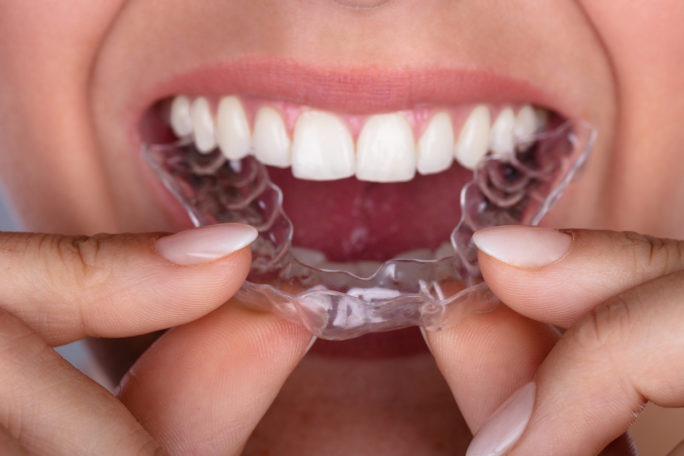“Teeth grinding, or Bruxism, is a condition in which people continually grind and clench their teeth,” explains Dr Gamer Verdian from The Dental Lounge in Macquarie Street, Sydney. ”It can have catastrophic effects on one’s dentition and can require very complex and expensive dental treatments if left untreated long term.”
Bruxism can also have an effect on the masseter muscles responsible for jaw movement, causing them to bulk up, creating a heavy set look to the lower face. While the Gold Standard treatment for teeth grinding has been to use a mouthguard at night, this protects the teeth, but it doesn’t prevent the movement itself. Teeth Grinding can also lead to other health issues such as tension headaches and migraines. It’s possible to lessen the movement by cleverly injecting Botox into the masseter muscles of the jaw.

“People with bruxism often have jaw related issues that lead to poor sleep, headaches and unexplained migraines,” adds Dr Verdian. “By placing wrinkle relaxing injections into the muscles that produce powerful jaw movements [the masseter muscles] we are able to reduce the strength of contraction of the overall muscle.”

Can I Expect My Teeth Grinding To Stop?
“This Procedure allows the muscle to relax into a state where it is not constantly tense, which leads to fewer symptoms and less damage to teeth,” says Dr. Verdian. “It also stops our ability to clench and grind as hard as we normally would without affecting our ability to chew and eat. This in turn leads to less force generated through our teeth and less fractures and wear over time.”
Consequently, the bulk of the masseter muscles is also lessened, created a more sculpted and refined look to the jaw.
Is it painful?
“Of all the areas that Botox is generally injected, the masseter region has much less of a nerve supply and feels much less painful than other areas,” explains Dr Verdian. “The injection occurs externally and is in a much less tender area than say the nose or eyes.”
How many treatments do I need?
“We prefer our patients to have four treatments every three months in the first year. That allows the muscle to have long lasting reduction in force production and provides significant long-term benefits. In the second year the treatments generally last four to six months before you need another top up.”